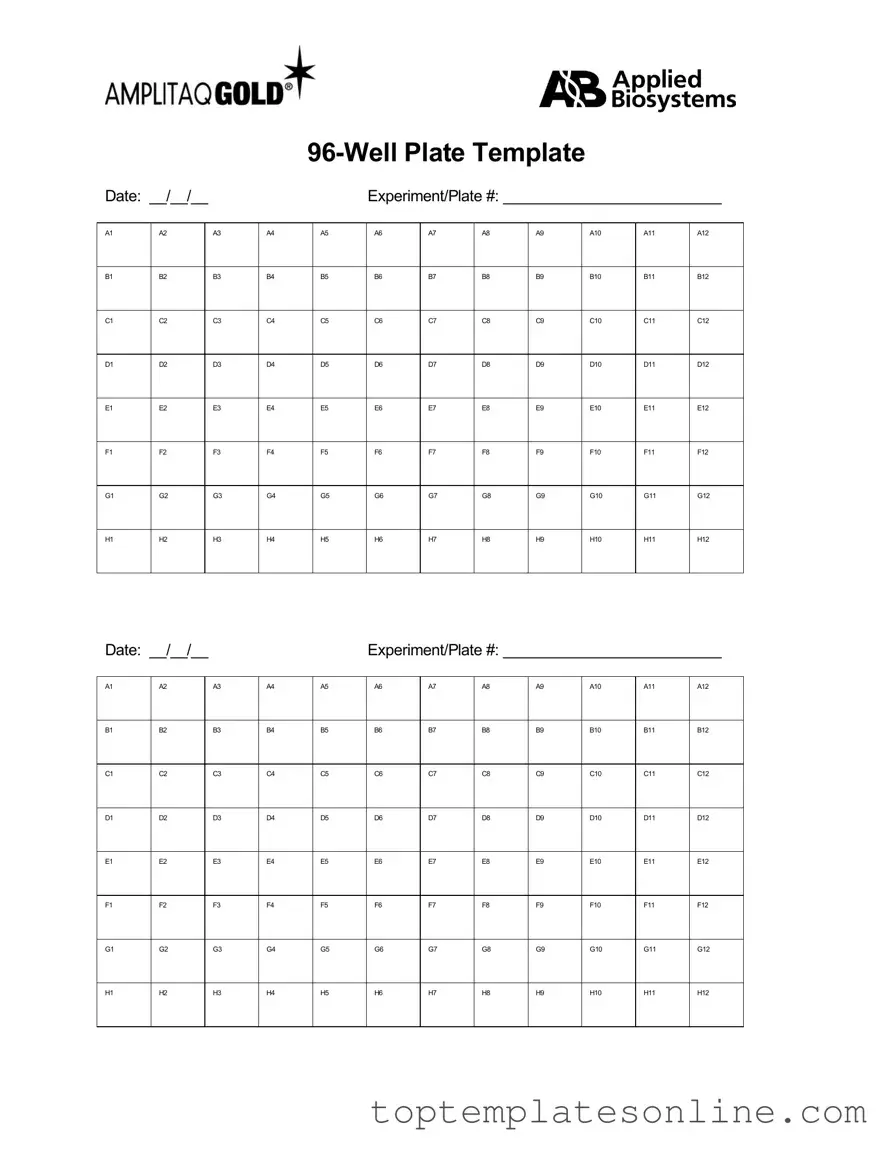Fillable 96 Well Form
The 96 Well form is a standardized document used primarily in laboratory settings for organizing and recording data from experiments conducted in a 96-well plate format. This form facilitates efficient data collection and analysis, ensuring that researchers can easily track results and maintain accuracy. By utilizing the 96 Well form, scientists can streamline their workflow and enhance the reliability of their findings.
Customize 96 Well Here
